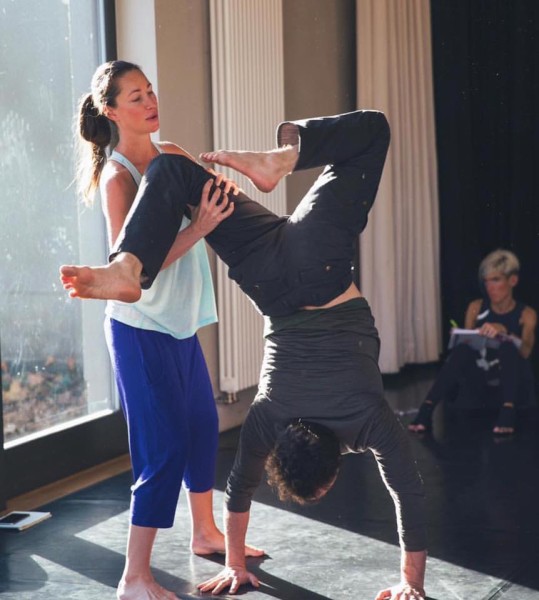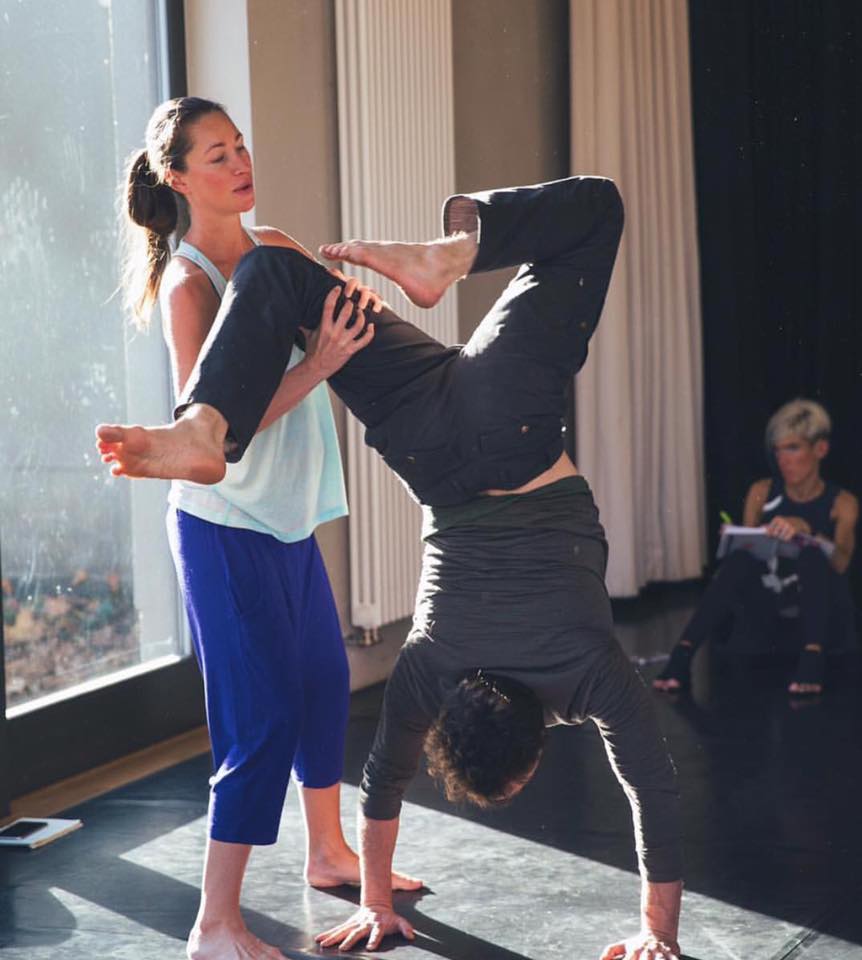There’s a simple principle to follow that works equally for healing, and for working at the level of our greatest potential.
If somethings hurts, don’t do it.
There’s always a way to do what you need to do in your body, without pain, feeling good every step along the way. And the good thing is, it works out that this is the best way for us to do whatever we need to do.
Also, please check with your doctor. It’s difficult for me to diagnose or make recommendations from an arm chair, without seeing you. And it’s always important to get advice directly from a qualified professional, who knows your particular case history. From here, I can share a few thoughts with you. And to start, it’s often good not to rush to diagnosis or causes.
Give your body a little support,
and it will continue to perform miracles for you.
Sometimes what we’re doing in this moment is what hurts us. Sometimes it’s something we did earlier in the day or week, maybe lifting the grocery bags in a funny way, or moving a box. And sometimes it’s just from how we live – carrying a child in one arm, a phone shoulder-to ear in the other, while typing emails with the third! I’m starting to understand that carrying around younger kids can lead to all kinds of chronic pain and injuries, if we’re not really careful in learning how to move well. Which is why we do this together.
A good step is to ask yourself some questions. What feels good? And what do you do that makes it feel good? What hurts? What kinds of things do you do that make it hurt? People know the answers to these questions about themselves. Just listen. You’ll learn a lot.
From here, begin in a place that feels good and comfortable to you, and move easily from here.
Much of what we can do to heal involves moving easily, in more directions than we are used to moving.
Interestingly, the same approach leads to
radical performance gains for athletes.
With flexibility in particular, we don’t achieve this by pushing hard against resistance in our bodies. Adult physiology doesn’t work this way. Instead, we achieve flexibility through easygoing movement around places of resistance. This creates a chemical signal in the brain that tells your muscles it’s safe to open up and become more mobile over time, rather than tighten and defend against injury.
So maybe this starting point where you’re comfortable is from sitting. Maybe it’s on hands and knees, with or without cushions. Maybe it’s standing. You’ll know what feels good. You’ll also be able to see and sense when you’re moving with tension, and when you’re moving easily in a way that releases stress. And from wherever you begin, there’s a whole lot you can do. There really are no limitations here.
It’s also worth remembering that tension is easiest to see first in our joints, then our muscles. The third place it occupies and inhibits our ability to move and heal is in our minds. The more practice you have – with yourself and others – the more easily you’ll sense this tension as it comes up, and learn to release it. Healing – along with the ability to navigate through challenge with ease – becomes possible from here.
—
It’s important to keep in mind that moving is good. Not so long ago, the medical approach to injury was immobilizing us for a long time. This kept people from hurting themselves even worse, but it made rehab very long and challenging, and often inhibited complete recovery.
Now whenever possible, maintaining mobility is a more common treatment path. You want to support your body’s natural healing process.
Your body is pretty amazing,
but it can use your help.
In general, you can support you by moving easy, everything you’ve got, in every direction you can.
In this case, “moving easy” means not putting much extra weight, tension, or stress on an affected area. If you’re feeling strain or injury in your upper thigh area, whether it’s an adductor, gracilis, or one of your hamstring muscles, the approach is the same. You don’t want the injury or surrounding areas to feel challenged. Yoga poses aren’t particularly important here, and you especially don’t want to “stretch” in any way. If you’re a yoga person interested in thigh safety, not pushing into forward folds – using the strength of one muscle against resistance in another – is an easy thing to drop.
Instead, to restore and maintain healthy balance and mobility, you want to move in a way that is fairly unchallenged.
Whether you’re standing or sitting, keep your knees softly bent rather than locked straight.
Hang easily over your thighs, and breathe deep enough that your body moves with every breath – lifting a bit on each inhale out of where you are, and softening to a place that feels good to go on each exhale.
Rather than push for a linear target – the deepest possible forward fold straight over your legs – drop the goals for a moment, and explore gently in all directions.
When you find a place that feels good to linger, linger and breathe there. When it feels good to move along, move along.
This is a starting point. You get to find what feels best for you each day. There’s lots of freedom to explore here, so use it and explore!
Remember what you want to avoid is putting stress on an injury. If something hurts, don’t do it. Find a way that doesn’t hurt. When you’re in pain, it puts stress into your body and mind. From here, the body kicks into defense mode. This is great for preventing an even worse injury, but it’s not great for healing. To heal, you need to relax. Let stress leave your body, rather than enter and make a home in you. You can do this by finding places that you’re comfortable, and moving gently from here.
Going easy is far from going lazy.
It doesn’t mean ignore the injury and just lie around.
It means move all around it, finding places that feel good to linger and breathe, and lingering and breathing right there. Moving evenly around an injury in this relaxed way gives the mechanical benefit of releasing excess tension from the surrounding areas, and improving local circulation. It also triggers your body’s Relaxation Response, a host of physiological reactions that support healing and overall health in your body.
One last tip: hot water bottles. Get two of them, fill with hot water straight from your tap – not scalding, just warm in a way that feels good – and surround whatever hurts.
This doesn’t always mean put the bottle right on an injury. When something hurts, a fairly extended area can become stiff and tense as part of your body’s defensive reaction.
Explore what feels good up your thigh and into your lower back, as well as down into your calf.
And a last thought, this approach and principles for healing and mobility extend well beyond your thighs. If you’d like to learn more, including how to practice healing on yourself and others, we give courses all around the world that help with everything from self-care to treatment on a professional level.
– by Mike
About Strala Yoga Training
Strala combines the movement and healing wisdom of tai chi with the form vocabularies of yoga, tai chi, qigong, and Traditional Chinese and Japanese Medicine, to help people release stress, move easily through challenge, and live radiantly inspiring lives.
It begins with a mindset, that says our best way to get where we’re going is to feel good along the way. It also works miracles for whole health, helping us to find ease in our bodies and minds, and create the right conditions both for healing and optimal performance.
In our Strala Yoga Training Courses, you learn to shape your destiny on every level that counts, from your psychology, chemistry and neurology, to your chromosomes and even gene expression. The unique set of skills you develop – for connecting with yourself and others, unblocking your energy, healing what needs healing and accomplishing challenge with ease – uncovers your ability to create the life you want, and be an inspiring leader to the people around you.
Who’s What’s and When’s of Strala Yoga Training


